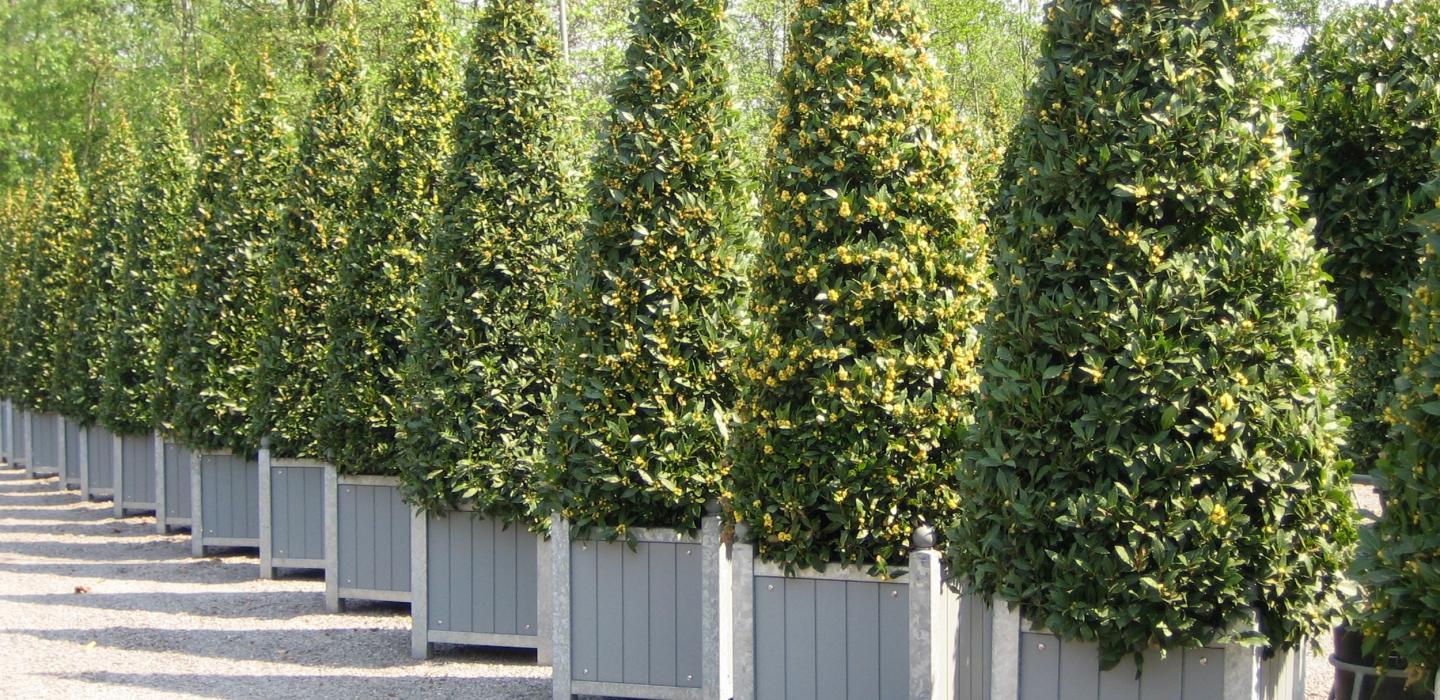Flemish tradition

A regional European product
Five years after the Ghent azalea, a second Flemish horticultural product – the Flemish bay tree – was recognised as a European Regional Product. The nine growers who have been awarded this recognition bring 100,000 bay trees to the market every year. The majority of these are exported, chiefly to the United Kingdom, Ierland but more recently also to the oil-producing countries. As the saplings are cultivated in the rather cold Flemish region, the Flemish bay tree is far more tolerant to cold than its southern cousins. It is precisely this advantage that has made the Flemish bay tree popular in countries with colder climates.
At least five centuries of tradition
The earliest mentions of Flemish bay cultivation date from the 16th century. In the 19th century the Laurus nobilis was exceptionally popular and the first family-run bay-growing businesses appeared. As from the 1950 exports also increased. After the Ghent azalea, the Flemish bay is the second non-edible product in Flanders to receive European recognition.
The secret of the Flemish bay
The Flemish bay is a perfectly pruned bay tree with a flawless stem and fine green leaves; it must be at least 5 years old and grown in a pot. By using the successive cutting method, the progeny are always identical. The most common shapes are pyramids, spheres and pillars.

Loved all over the world
The nine growers who have received this recognition market 100,000 bay trees every year. 90% of them are exported, especially to the United Kingdom, Ireland and, more recently, to the oil-producing countries. Since the plant is grown in the quite cool climate of Flanders, it is much more winter hardy than its southern counterparts. This is precisely what makes the Flemish bay popular in colder countries.
The Flemish bay in the leading role, from palace to World Cup
The Flemish bay is extremely decorative and is in fact the most popular item in plant hire. It is often used as an ornamental plant at exhibitions, festivities, wedding parties and trade fairs in Belgium and abroad. Here are some examples:
- 900 Flemish bay trees played a glorious match at the 2006 World Cup in Germany.
- You could lose yourself in the maze of Flemish bays designed for Tommy Hilfiger in Amsterdam.
- The Flemish bay looks very stylish and so deserves inclusion at in various palaces and other prestigious places. For example, as well as the royal palaces of Denmark and Belgium, the Flemish bay stands proudly at the Cartier outlet in St Petersburg, Christies auction house in Paris and the singer Madonna’s private house in England.
Growers
There are currently still nine ornamental plant growers in Flanders who concentrate on cultivating bay trees. Most of them grow nothing else. The renowned Flemish bay has customers both in Belgium and abroad.





